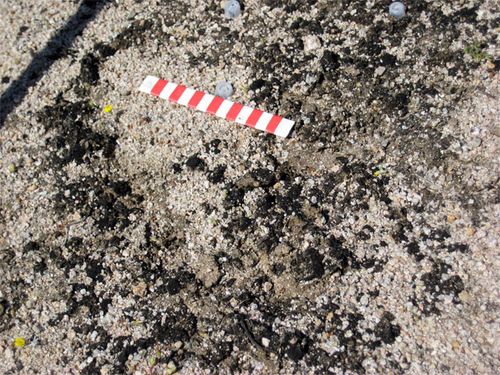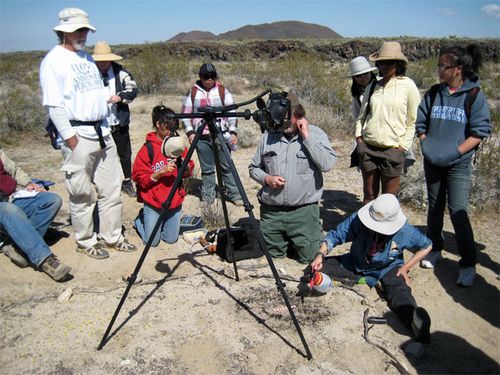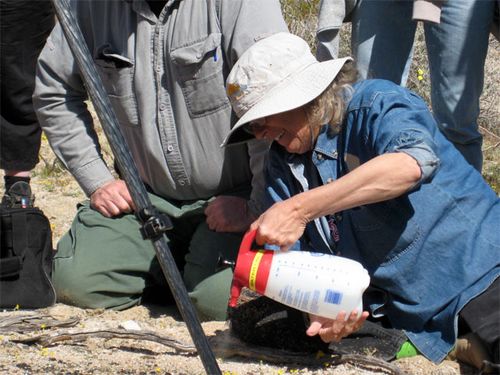This is a story about how a brilliant hypothesis proposed in the evening can go down in flames the next morning, and also a cautionary tale about technology.
Cryptogamic crusts seem to grow in regular patterns. Lumps of black cyanobacterial stuff an inch or less across are separated by about the same distance of bare soil. It is difficult to see why cells that are microscopic feel the need to grow in regularly spaced clumps, but they do.
 The white and red bars are a centimeter scale
The white and red bars are a centimeter scale
We know that biological patterns like these require both positive and negative feedback mechanisms. Last night in one of our assemblies, somebody suggested that water retention was the reason.
 It took a while to set this experiment up and do it
It took a while to set this experiment up and do it
It seems so reasonable! The big lump gets wet in the rain, takes longer to dry than bare soil, and so all the cells benefit. Immediately several teams proposed ways to test the idea.
 The microorganisms resopnded quickly to the water
The microorganisms resopnded quickly to the water
The largest group used an infrared imaging camera, a fluorometer to detect active photosynthesis, and a spray bottle. They set up the camera in the desert pointing down into some cryptogamic crust, watered the crust, and spend the day watching it dry and making infrared images. At the end of a long and tiring day in the sun and wind, they have lots of data. There hasn't yet been any time to figure out what it means yet. That will require some serious time on the computer.
 But what does it mean?
But what does it mean?
Another team consisting of two people simply weighed some crust and some bare soil on a balance, watered them and weighed them again as they dried. They did three trials of each. It took an hour. They found with 99% certainty that the living crust retained water LESS WELL than bare soil!
Sometimes the low-tech method works.
Sometimes a great sounding hypothesis turns out to be a dud.
Oh well. Tomorrow we return to civilization!

